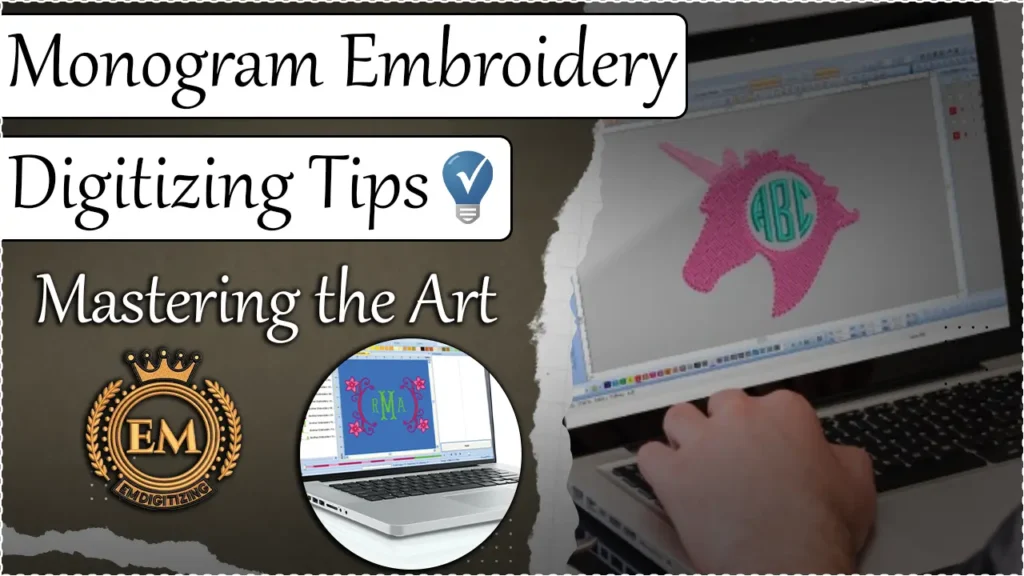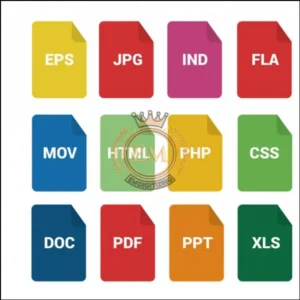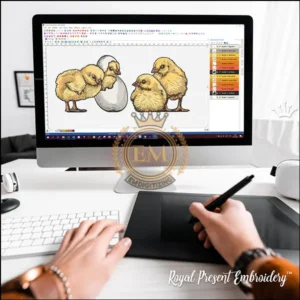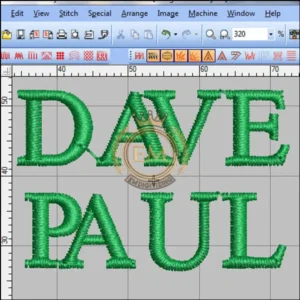Embroidered monograms add a touch of elegance and personalization to various items, from clothing and accessories to home decor. In the world of embroidery, digitizing monogram designs has become increasingly popular, allowing for precise and intricate creations.

Whether you are a beginner or looking to enhance your existing skills, this guide will provide valuable insights and guidance to help you elevate your work to the next level.
Monogram Embroidery Digitizing Tips: Mastering the Art
Choosing the Right Software for Monogram Embroidery Digitizing:
When it comes to digitizing monogram designs, having the right software is crucial. There are various embroidery digitizing software options available in the market, each offering unique features and functionalities.
Some popular choices include Wilcom, Hatch, and Embird.
Key Factors to Consider when Selecting Software:
When selecting software for monogram embroidery digitizing, consider factors such as ease of use, compatibility with your embroidery machine, availability of design editing tools, and the level of technical support provided.

Additionally, take a look at user reviews and seek recommendations from fellow embroiderers to ensure you’re making the right choice for your needs.
Understanding the Basics of Design Digitization
Digitizing a design involves converting an image or artwork into a format that can be recognized and stitched by an embroidery machine.
This process requires specialized software that translates each element of the design into stitches, taking into account factors like stitch density, type, and direction.
Importance of Proper File Formats:
When digitizing monogram designs, it’s crucial to have the design file in a suitable format, such as .dst or .pes. These file formats are compatible with most embroidery machines and ensure accurate reproduction of the design.

Make sure to consult your embroidery machine’s user manual or manufacturer for the recommended file formats.
Preparing the Design for Digitization:
Before digitizing a monogram design, it’s essential to prepare the artwork properly. This involves cleaning up the image, removing any unnecessary elements, and ensuring clarity and simplicity in the design.

Remember, the digitized design will only be as good as the original artwork, so invest time in creating a clean and well-defined design.
Tips for Monogram Digitization:
There are some tips monogram embroidery digitizing tricks to get best results let’s have a look:
Selecting Suitable Fonts and Lettering Styles:
When choosing fonts and lettering styles for monogram designs, consider the overall aesthetic and purpose of the project.
Classic block letters exude elegance, while script fonts add a touch of delicacy. Experiment with different options to find the perfect combination that matches the desired tone of your design.
Optimizing Letter Spacing and Proportions:
Proper letter spacing and proportions play a crucial role in achieving a visually appealing monogram design. Avoid overcrowding or stretching letters too far apart.

Experiment with different spacing options and adjust the size of each letter to create a balanced and harmonious monogram.
Enhancing Monograms with Embellishments:
To add extra flair to your monogram designs, consider incorporating embellishments such as flourishes, frames, or decorative elements.
These embellishments can highlight the monogram, making it stand out and enthralling the viewer.
Considerations for Different Fabric Types:
Different fabrics can pose unique challenges when it comes to embroidery. For instance, delicate fabrics may require lighter stitching and a stabilizer to prevent puckering.
Thicker fabrics, on the other hand, may require denser stitching for optimal coverage. Always test your design on a scrap piece of fabric before embroidering on the final material to ensure the best results.
Advanced Monogram Embroidery Techniques:
Some advanced embroidery techniques you can use to give your design truly new look:
Adding Dimension with 3D Effects:
Want to take your monogram designs to the next level?
Consider adding some 3D effects! By using foam underlays or specialty stitching techniques like raised satin stitches, you can create a three-dimensional look that adds depth and visual interest to your designs.
Experiment with different techniques and materials to achieve the desired effect and make your monograms truly stand out.
Exploring Specialty Threads and Textures:
To add extra flair to your monogram designs, don’t be afraid to explore the world of specialty threads and textures.
Metallic threads can give your designs a luxurious and shimmering touch, while variegated threads can create unique color gradients.
Additionally, incorporating different textures like velvet or chenille can add tactile appeal to your monograms. Have fun experimenting with different threads and textures to add an extra element of creativity to your designs.
Incorporating Specialty Stitches and Embroidery Techniques:
Why stick to basic stitches when you can incorporate specialty stitches and embroidery techniques into your monogram designs?
From intricate fill stitches to decorative motifs, the possibilities are endless. Try incorporating techniques like appliqué, lacework, or trapunto to add depth and intricacy to your monograms.
Think outside the box, let your creativity flow, and watch your monogram designs flourish.
Conclusion: Mastering the Art of Monogram Embroidery Digitizing:
Embroidery digitizing for monogram designs is a skill that can be perfected with practice and knowledge. By understanding the basics of digitization, selecting the right software, and implementing essential tips and techniques, you can create stunning and professional monogram designs.
So, embrace the art of monogram embroidery digitizing and unlock your creativity to create beautiful and unforgettable designs.
EMdigitizing: Embroidery Digitizing Expert At Your Service:
Are you looking for help with turning your designs into embroidery?
Check out EMdigitizing! We specialize in embroidery digitizing and have a great deal for you. If you’re a first-time customer, you get a huge 50% off on all our services.
Our team is an expert in digitizing, they take your design and carefully digitize it, making sure it’s ready quickly and without costing you a lot.
Got any questions? Just contact us.
Our team is always here to help and will get back to you fast. And if you think this info is helpful, feel free to share it with your friends.
Thanks for reading, and happy stitching!
Frequently Asked Questions:
If you want to create a monogram, you’ll need to digitize your company’s logo. This means using special embroidery software to turn the logo into a stitch file. The software will help you choose the right stitch types and densities to make your monogram look professional. Don’t forget to think about the size, positioning, and thread colors to achieve a personalized and polished monogram.
The best file format for embroidery digitizing is .DST. This format is compatible with most embroidery machines and ensures that your design stays intact.
Learning embroidery digitizing takes time and practice. It usually takes a few months of steady practice to become good at it. However, the time it takes depends on how dedicated you are and how much experience you have. It could take a year or even more of dedicated study to become a master at embroidery digitizing.
To digitize art for embroidery, you need specialized embroidery digitizing software. This software allows you to define the stitch type, color, and density in a stitch file. By doing this, the software transforms an image into a design that a machine can stitch.
Embroidery digitizing can be challenging for beginners, but it becomes easier with practice and the right tools. Creating attractive embroidery patterns requires careful attention to detail.
Digitizing embroidery designs can be difficult because it requires skill with specialized software. This software helps transform hand-drawn artwork or text into stitch patterns that machines can read. The difficulty level depends on how complex the design is and how much experience the person has with digitizing.
